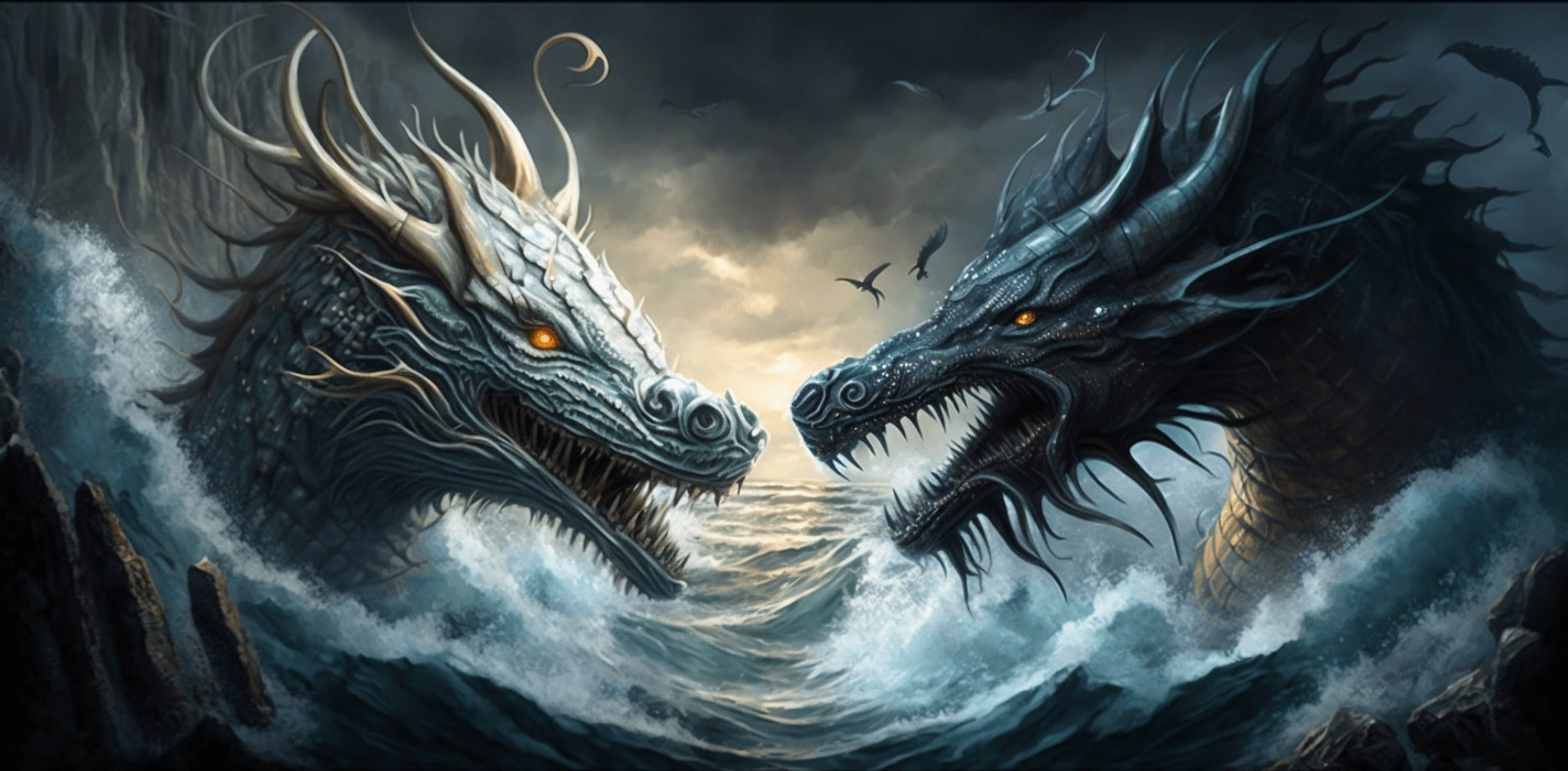Dragons in Norse Mythology: Symbols of Power, Chaos, and Destruction

Dragons, known as "ormr" in Old Norse, are powerful and fearsome creatures that feature prominently in Norse mythology. These legendary beasts symbolize chaos, destruction, and the untamed forces of nature. Unlike the more benevolent dragons found in some other mythologies, Norse dragons are often malevolent, embodying the darker aspects of the world and serving as formidable adversaries for heroes and gods alike.
The Most Notable Dragons in Norse Mythology
-
Fafnir: One of the most famous dragons in Norse mythology, Fafnir was originally a dwarf who transformed into a dragon due to his insatiable greed. Fafnir's story is recounted in the Völsunga Saga, where he guards a vast treasure hoard known as the "Andvaranaut." Consumed by his greed, Fafnir becomes a monstrous dragon, poisoning the land around him with his presence. He is eventually slain by the hero Sigurd, who uses his wits and strength to overcome the dragon, an act that cements Sigurd's place as one of the greatest heroes in Norse legend.
-
Níðhöggr: Níðhöggr is a dragon that resides at the base of Yggdrasil, the World Tree. This dragon gnaws at the roots of the tree, symbolizing decay and the destructive forces that threaten the cosmos. Níðhöggr is often depicted as a creature of darkness, feeding on the corpses of the dead and embodying the idea of a force that erodes the very foundation of existence. In the prophecy of Ragnarok, Níðhöggr is said to emerge from the earth, carrying the dead on its wings as it ushers in the end of the world.
-
Jörmungandr: While not always classified as a dragon in the traditional sense, Jörmungandr, the Midgard Serpent, shares many characteristics with dragons. This massive sea serpent encircles the world and is fated to battle the god Thor during Ragnarok. Jörmungandr's immense size, venomous breath, and role in the apocalyptic battle make it one of the most terrifying creatures in Norse mythology.
The Symbolism of Dragons in Norse Culture
In Norse culture, dragons are often associated with greed, chaos, and death. The transformation of Fafnir into a dragon serves as a cautionary tale about the dangers of avarice, while Níðhöggr's relentless gnawing at the roots of Yggdrasil symbolizes the inevitable decay that threatens the cosmic order. Dragons in Norse mythology are rarely, if ever, portrayed as noble or wise creatures; instead, they are embodiments of the destructive forces that the gods and heroes must overcome.
Dragons also represent the unknown and the untamed wilderness. The Norse people, who lived in a harsh and unpredictable environment, likely saw dragons as representations of the dangers that lay beyond the safety of their settlements. Whether in the form of the monstrous Fafnir or the world-encircling Jörmungandr, dragons embodied the fear and respect that the Norse had for the natural world.
Dragons in Viking Art and Literature
Dragons frequently appear in Viking art, particularly in the intricate carvings found on rune stones, ship prows, and weaponry. These depictions often emphasize the dragon's ferocity and power, with exaggerated features like gaping jaws, coiled bodies, and sharp claws. The dragon motif was a popular choice for decorating the longships of Viking warriors, symbolizing both protection and the fearsome nature of the ship's crew.
In literature, dragons play central roles in many Norse sagas and poems. The story of Sigurd and Fafnir is one of the most famous, serving as a key narrative in the Völsunga Saga and influencing later medieval literature, including the German Nibelungenlied. Dragons are also mentioned in the Prose Edda and the Poetic Edda, where they are often depicted as adversaries that the gods and heroes must defeat to restore order.
The Legacy of Dragons in Modern Culture
The legacy of Norse dragons extends beyond mythology, influencing modern fantasy literature, film, and art. The fearsome and majestic image of the dragon, as depicted in Norse stories, has become a staple of the fantasy genre, inspiring countless adaptations and interpretations. From J.R.R. Tolkien's Smaug in The Hobbit to the dragons of George R.R. Martin's A Song of Ice and Fire, the influence of Norse mythology on the portrayal of dragons in modern storytelling is undeniable.
In addition to their presence in fiction, Norse dragons have also been embraced by modern pagan and Heathen communities as symbols of power, protection, and the natural forces of the world. The dragon remains a potent symbol in contemporary culture, representing both the challenges that must be faced and the strength needed to overcome them.
Conclusion
Dragons in Norse mythology are powerful symbols of chaos, destruction, and the untamed forces of nature. From the greed-driven Fafnir to the world-gnawing Níðhöggr, these legendary creatures embody the darker aspects of the cosmos, serving as formidable challenges for the gods and heroes of the Norse pantheon. The enduring legacy of these dragons can be seen in the art, literature, and popular culture that continues to draw inspiration from the rich tapestry of Norse myth. As symbols of both fear and awe, Norse dragons remind us of the complex and often perilous world in which the Vikings lived, and the timeless stories that emerged from their encounters with these legendary beasts.
Norse dragons, Fafnir, Níðhöggr, Jörmungandr, Viking mythology, Norse legends, dragons in Norse culture, Viking art, Viking dragons, Norse sagas, mythology dragons.
